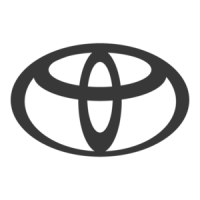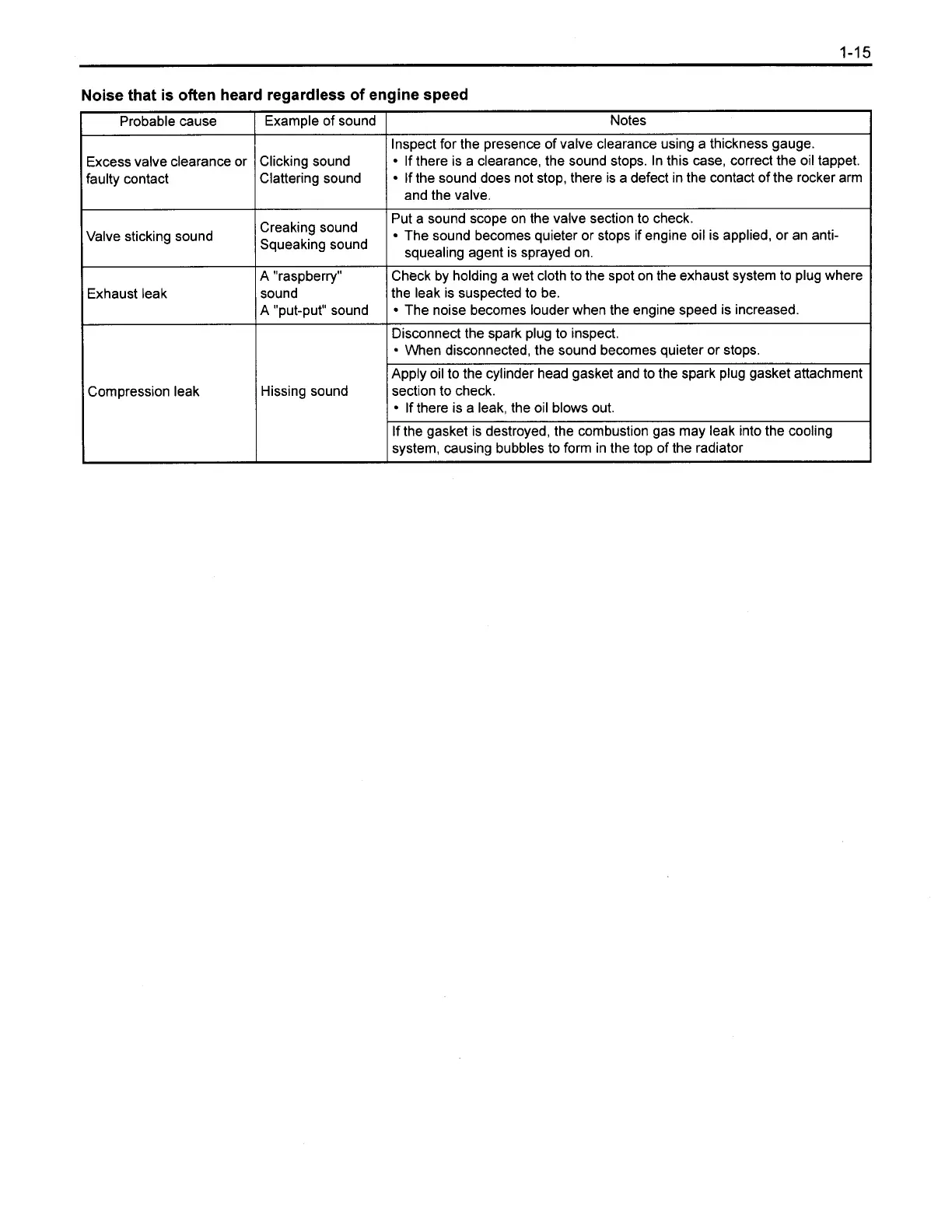Noise that is often heard regardless of engine speed
Probable cause
Excess valve clearance or
aulty contact
Jalve sticking sound
fxhaust leak
Sompression leak
Example of sound
Clicking sound
Clattering sound
Creaking sound
Squeaking sound
A "raspberry"
sound
A "put-put" sound
Hissing sound
Notes
Inspect for the presence of valve clearance using a thickness gauge.
If there is a clearance, the sound stops. In this case, correct the oil tappet.
If the sound does not stop, there is a defect in the contact of the rocker arm
and the valve.
Put a sound scope on the valve section to check.
The sound becomes quieter or stops if engine oil is applied, or an anti-
squealing agent is sprayed on.
Check by holding a wet cloth to the spot on the exhaust system to plug where
the leak is suspected to be.
The noise becomes louder when the engine speed is increased.
Disconnect the spark plug to inspect.
When disconnected, the sound becomes quieter or stops.
Apply oil to the cylinder head gasket and to the spark plug gasket attachment
section to check.
If there is a leak, the oil blows out.
If the gasket is destroyed, the combustion gas may leak into the cooling
system, causing bubbles to form in the top of the radiator

